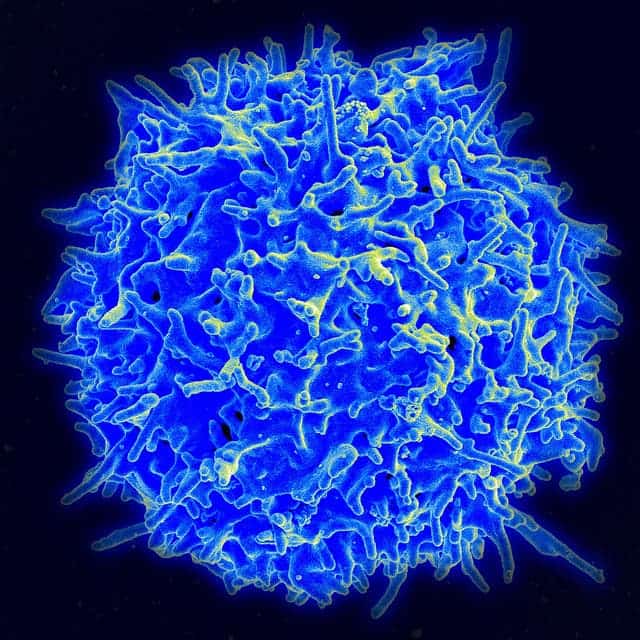
The worst outcomes of COVID-19 seem to be predicated more on whether or not the virus triggers an overreaction of the immune system rather than the infection itself. New research suggests that cytokine storms may lower T cell counts, a type of white blood cell that plays an important role in immune responses, thereby affecting disease severity.
When the immune system is too much of a good thing
Cytokines are small proteins released by many different cells in the body, including those of the immune system where they coordinate the body’s response against infection and trigger inflammation.
It is through the release of these molecules that immune cells are able to communicate with one another. Once released, the cytokines typically trigger localized inflammation, which is a physiological response by the body that aims to destroy the pathogen.
Sometimes, however, the immune system overreacts during an infection, triggering the release of more cytokines than necessary and the recruitment of more white blood cells, which, in turn, produce even more cytokines. It’s a positive feedback loop that can lead to severe complications and life-threatening organ failure.
Doctors refer to this overreaction as a “cytokine storm”. In the context of COVID-19, cytokine storms seem to be associated with severe deterioration of the lungs, and perhaps other organs.
In a new study published in the journal Frontiers in Immunology, Chinese researchers found that cytokine release can drive the depletion and exhaustion of T cells.
Their investigation was prompted by the observation that patients with COVID-19 had very low numbers of lymphocytes, white blood cells that include T cells.
“We should pay more attention to T cell counts and their function, rather than respiratory function of patients,” said author Dr. Yongwen Chen of Third Military Medical University in China, adding that “more urgent, early intervention may be required in patients with low T lymphocyte counts.”
Chen and colleagues examined 522 COVID-19 patients and 40 healthy controls. Lymphocyte counts were recorded for 499 patients, 76% of whom had abnormally low total T cell levels.
The most severe cases who were admitted to intensive care units (ICU) had lower T cell counts than non-ICU cases. Likewise, those over the age of 60 had lower levels of T cells — this age group is particularly at risk of COVID-19 morbidity.
What’s more, the T cells that did circulate were ‘exhausted’, in the sense that they did not function at full capacity. In addition to increasing the risk of COVID-19 complications, T cell exhaustion is linked to secondary infections, which can be common in a hospital setting.
In the future, Chen and colleagues want to find finer subpopulations of T cells in order to paint a more accurate picture of their role in COVID-19 prognosis.
Importantly, there are many different types of cytokines, classified by the types of immune cells that release them. Each such cytokine may trigger a distinct response when binding to a receptor. For instance, some actually decrease inflammation rather than increasing it. It is therefore paramount to understand which cytokines are released in response to the coronavirus infection.
The findings might also spur drug discovery that promotes T cell production and boosts their function.
Tocilizumab, an existing immunosuppressive drug, might be effective in this context although it hasn’t been investigated yet in the context of COVID-19. The antiviral treatment Remdesivir may also prevent T cell exhaustion.






